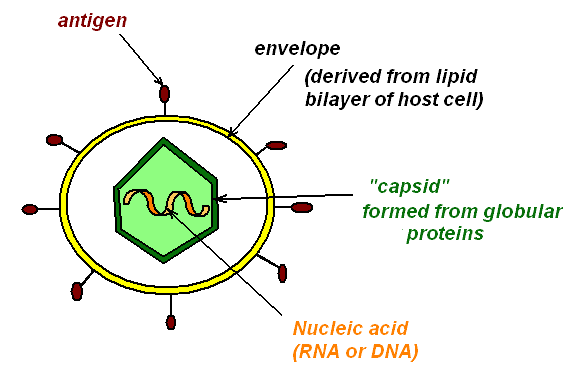You can tell if something's a virus quite easily, it's normally got the word "virus" in its name! Examples of this:
- HIV (Human Immunodeficiency Virus)
- Influenza Virus
- Mumps Virus
- Measles Virus
Viruses are really small! They only range from 18 to 450 nm!!
But that doesn't mean they're not deadly.
Viruses cannot survive outside cells. (They are obligate intracellular pathogens) They don't have all the enzymes they need to replicate, so they have to take over a cell and use its nutrients. Once inside a cell, they are capable of replicating.
So what are viruses made out of??
They contain a core of nuclear material, either DNA or RNA, but never both. This is surrounded by a protein shell, and some viruses also have a lipid envelope.
The virus enters the host cell either by endocytosis, or by fusion of the viral envelope and the host cell membrane.

